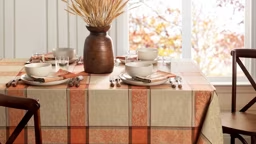
Everyone has their own cabin, cottage, camp or lakehome style. But in my mind, a northwoods cabin isn’t complete without a rustic, lumberjack-style coatrack in the entryway. To make your own, you need only a tree, a few simple tools, and a pair of disposable work gloves – chain saw carpentry at its finest.
1. Pick your lumber. There are no hard and fast rules when it comes to choosing a type of wood for your coatrack. Traditionally, pine and spruce work best because of their softwood characteristics and relatively uniform and straight trunks. Birch logs and driftwood also work well and don’t require peeling.
2. Acquire a half log and pegs. If you’re up for the challenge of making your coatrack in true lumberjack fashion, from felling your own tree to wall-mounting the finished rack, check out “How to Make a Half Log and Pegs” at the bottom of this page.
If you’re crunched for time, don’t want to thin your forest, or don’t know your way around a chain saw, talk to an area sawmill. They’ll be able to provide a chunk of wood at no or little cost, and they can even do the splitting for you. Most home-improvement stores also sell whole or half logs, but expect to pay at least several dollars per foot, and sometimes much more. If you want to buy pegs at the store, too, go to the dowel section and pick up 1-inch dowels (commonly sold in 48-inch lengths).
We chose the more woodsy weekend-lumberjack route, and our rack ended up being 48 inches long, made from an 8-inch-diameter log that we split to about 5 inches thick.
3. Drill holes for the pegs. Starting 8 inches in from one end of the half-log base, use a 1-inch wood drill bit to drill five holes, 2 inches deep, along the centerline at 8-inch intervals.
4. Drill holes for the mounting screws. Select two peg holes that are either 16 or 24 inches apart (the typical distances between wall studs), and drill ¼-inch holes inside each peg hole all the way through the half-log base. You will use these holes later (step #7) to mount the coatrack to the wall.
see also Weekend Project: DIY Log Bench
5. Angle the ends of the half-log base. Using a chain saw or table saw, nip off each end of the half-log base at a 45-degree angle.
6. Put on the finishing touches. If using green wood, let the coatrack dry for several months. Then, sand the back flat and sand the roughest edges. Remove any inner bark that’s starting to peel away. Finish the rack with a clear coat of polyurethane, if desired.
7. Mount the coatrack. Find and mark your wall studs. Secure the log base to the wall by drilling 3-inch screws through the screw holes in the empty peg holes and into studs. If the log base needs more support, install additional screws through the log face near the rounded top.
8. Install the pegs. Once the log base is secured to the wall, gently tap the pegs into place. You want the pegs to be removable so you can access the mounting screws later. (Warning: The sap from green wood will cement the pegs into place. Even dry wood will swell, making peg removal difficult.)
Voilà! You now have a place to hang your checkered flannel jacket when you come in from the great outdoors. And if anybody ever questions your prowess as a lumberjack, just point toward the door … it’s all the proof you’ll ever need.
6. Put on the finishing touches. If using green wood, let the coatrack dry for several months. Then, sand the back flat and sand the roughest edges. Remove any inner bark that’s starting to peel away. Finish the rack with a clear coat of polyurethane, if desired.
7. Mount the coatrack. Find and mark your wall studs. Secure the log base to the wall by drilling 3-inch screws through the screw holes in the empty peg holes and into studs. If the log base needs more support, install additional screws through the log face near the rounded top.
8. Install the pegs. Once the log base is secured to the wall, gently tap the pegs into place. You want the pegs to be removable so you can access the mounting screws later. (Warning: The sap from green wood will cement the pegs into place. Even dry wood will swell, making peg removal difficult.)
Voilà! You now have a place to hang your checkered flannel jacket when you come in from the great outdoors. And if anybody ever questions your prowess as a lumberjack, just point toward the door … it’s all the proof you’ll ever need.

See also Over-the-top DIY Tree House Project










